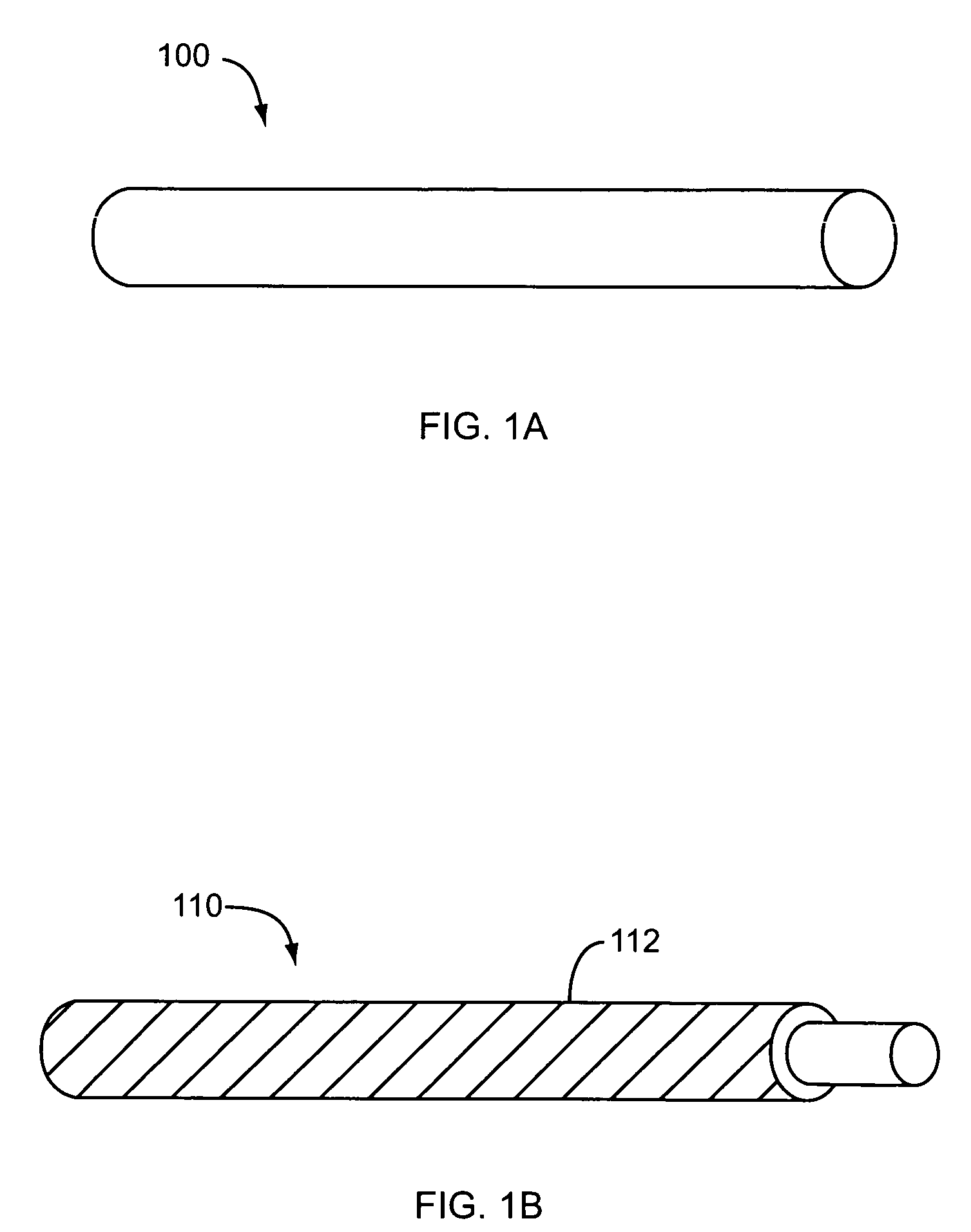Nanowire dispersion compositions and uses thereof
- Summary
- Abstract
- Description
- Claims
- Application Information
AI Technical Summary
Benefits of technology
Problems solved by technology
Method used
Image
Examples
example 1-1
[0080] A dispersion mixture was made by adding 0.04 g of Surfynol 440 to 2 g of nanowire solution (in Control 1) and mixing. The mixture was coated on a VITEX film surface by using a #8 Meyer rod. The coating was dried in an 80° C. oven for 5 min. Then, an optical microscope was used to record the wire dispersion on the coating. The wire dispersability was visually inspected based on the level of the wire aggregates. It was found that compared to the Control 1 (without surfactant), much better wire dispersion of the coating was noticed in Example 1-1.
example 1-2
[0081] Example 1-2 was prepared according to the procedure for Example 1-1 except that instead of Surfynol 440, 0.01 g of polyvinyl alcohol was added to 2 g nanowire solution (0.01 weight per cent nanowire) and mixed therewith. It was found that compared to the Control 1 (without surfactant), better wire dispersion of the coating was noticed in Example 1-2.
example 1-3
[0082] Example 1-3 was prepared according to the procedure for Example 1-1 except that in addition 0.01 g of polyvinyl alcohol was added to the mixture of Example 1-1. It was found that compared to Control 1 and Example 1-2, wire dispersion in Example 1-3 was further improved by mixing together both short chain surfactant (Surfynol 440) and long chain water soluble polymer (PVA).
PUM
| Property | Measurement | Unit |
|---|---|---|
| Temperature | aaaaa | aaaaa |
| Dispersion potential | aaaaa | aaaaa |
| Flexibility | aaaaa | aaaaa |
Abstract
Description
Claims
Application Information
 Login to View More
Login to View More - R&D
- Intellectual Property
- Life Sciences
- Materials
- Tech Scout
- Unparalleled Data Quality
- Higher Quality Content
- 60% Fewer Hallucinations
Browse by: Latest US Patents, China's latest patents, Technical Efficacy Thesaurus, Application Domain, Technology Topic, Popular Technical Reports.
© 2025 PatSnap. All rights reserved.Legal|Privacy policy|Modern Slavery Act Transparency Statement|Sitemap|About US| Contact US: help@patsnap.com


